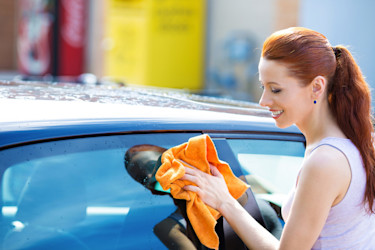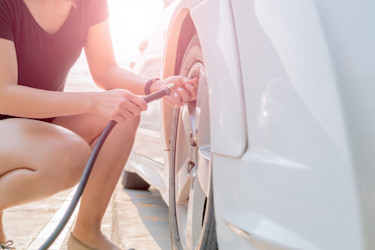Do you know what to do after a car accident? According to the Bureau of Transportation Statistics (BTS), there were more than 6 million of them in 2023. If you happen to be involved in an auto accident, you’ll want to be prepared. Keep this accident checklist handy in case the unfortunate happens.
- 1. Assess the Scene of the Accident
- 2. Find a Safe Location to Call the Police
- 3. Take Photos and Exchange Information
- 4. Contact Your Insurance Company Within 24 Hours
- Understanding No-Fault vs. At-Fault States
- Timeline: What to Do and When
- FAQs
- Real-World Scenarios
- The Bottom Line
Quick Answer: What to Do After a Car Accident
- Check for injuries and call 9-1-1 if anyone is hurt.
- Move to safety. Get out of traffic if vehicles are drivable.
- Call the police.
- Document everything. Take photos or videos of the damage, scene, license plates, and insurance cards.
- Exchange information like names, phone numbers, insurance details, and license plate numbers.
- Don't admit fault.
- Notify your insurance within 24 hours.
1. Assess the Scene of the Accident
Immediately after a collision, your first priority is to make sure everyone is safe. Check yourself and your passengers for injuries. If it's safe, check on the occupants of any other vehicle involved. Call 9-1-1 right away if someone is hurt or there are undriveable vehicles blocking traffic dangerously. Tell the dispatcher your location, the number of people injured, and the nature of their injuries. Stay on the line and follow their instructions until medical personnel arrive.
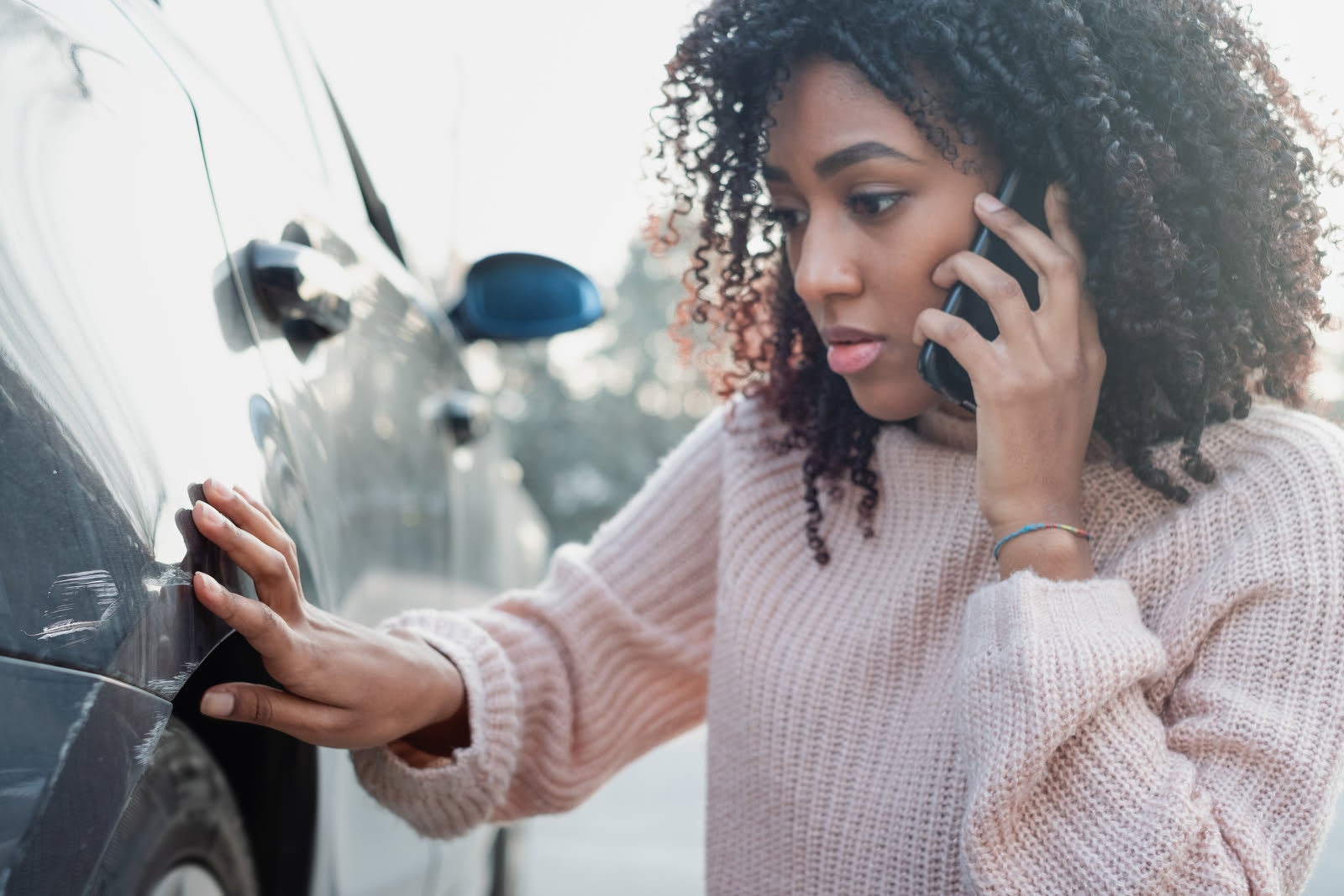
2. Find a Safe Location to Call the Police
If there are no injuries and all vehicles are drivable, your next priority is getting your car to a safe location. Had a minor fender bender on the highway? Pull to the side of the road, and be sure to check your surroundings before opening your door. You don’t want to accidentally step into traffic. Turn on your hazard lights to alert other drivers.
If possible, communicate with the other driver(s) involved and agree to move to a nearby parking lot or gas station. This provides a safer place to exchange information and wait for the police, away from moving vehicles.
Once you're in a safe location, call the non-emergency police number to report the accident. Provide them with your information, location, and details about the collision. An officer will likely be dispatched to the scene to file an official report.
You must call the police if anyone is injured in all states or if property damage exceeds your state's threshold. Police should also be called in cases of a hit-and-run, suspected DUI, or when a commercial or government vehicle is involved. If no officer is dispatched to the scene, you should still exchange information with the other driver, take extensive photos, collect witness contact information, and file a report at the police station within 24 hours. Many states allow walk-in reports to ensure the incident is officially documented, even if officers don't respond.
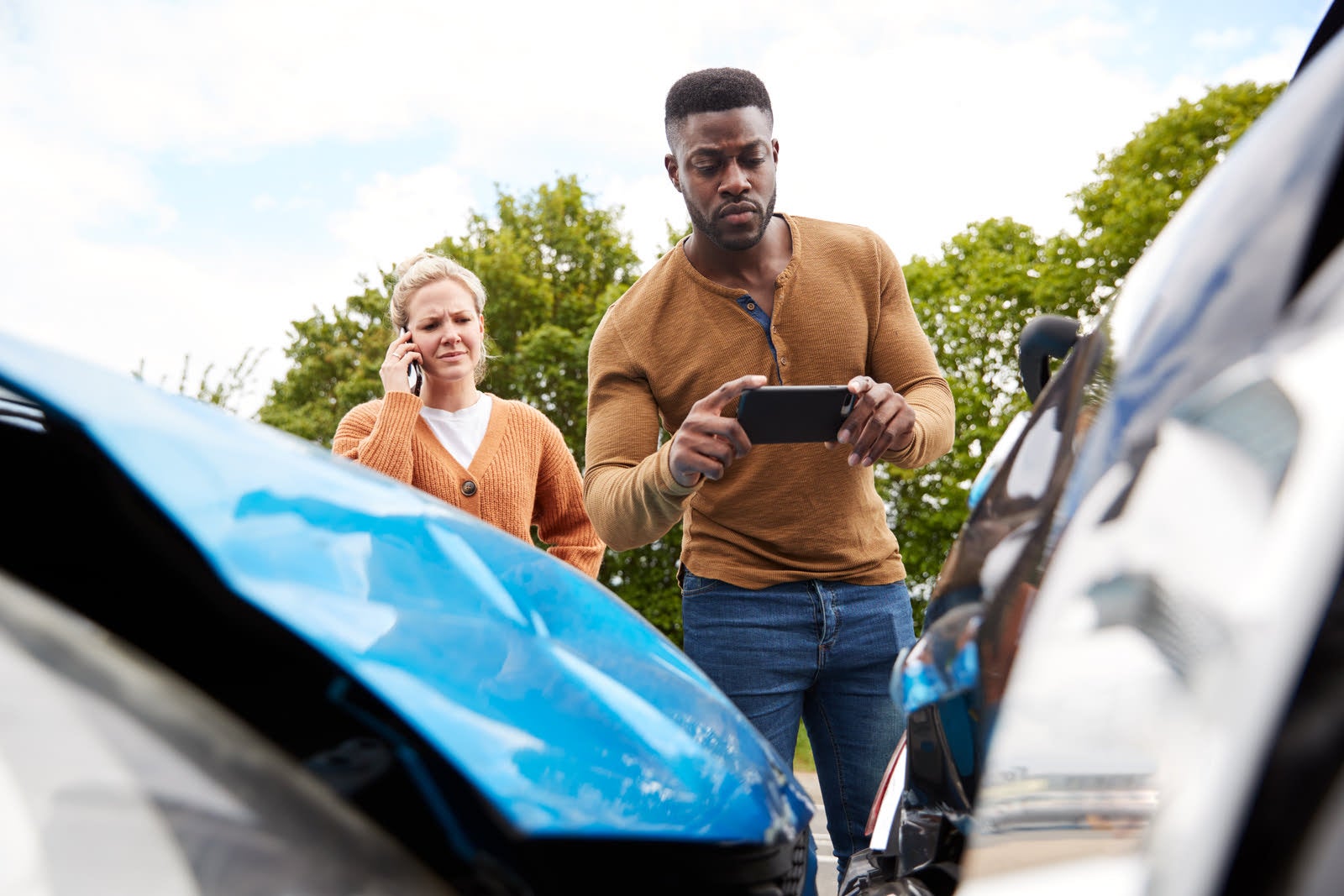
3. Take Photos and Exchange Information
The beautiful thing about smartphones is that most of us now carry a camera everywhere. Your smartphone can be a valuable tool after a collision. Use it to document everything, and store it in a convenient place. A good tip is to email yourself the images. That way, they'll remain easily accessible.
Once you’ve made sure the cars are out of harm’s way, take the following photos:
- Individual images of the vehicles involved, including license plates
- A wide-angle view of the scene of the accident
- Close-up views of the specific vehicle damage
- The other driver’s license and insurance policy information
- Contact information, like phone numbers, for any witnesses
- The responding police officer’s information for easier follow-up
Also, take a video of the scene of the accident. It should be at least a minute long and include all angles. Photos and a video will help jog your memory in the days following the crash.
Additionally, you'll need to exchange information with anyone involved. From the other driver, make sure to get their full legal name, phone number, email, driver's license number, license plate number, insurance policy information, and note their vehicle make, model, and color. Make sure to give the other driver your name, your phone number, your insurance information, and your license plate number. If there were witnesses, ask for their full name, phone number, email, and a brief statement of what they saw.
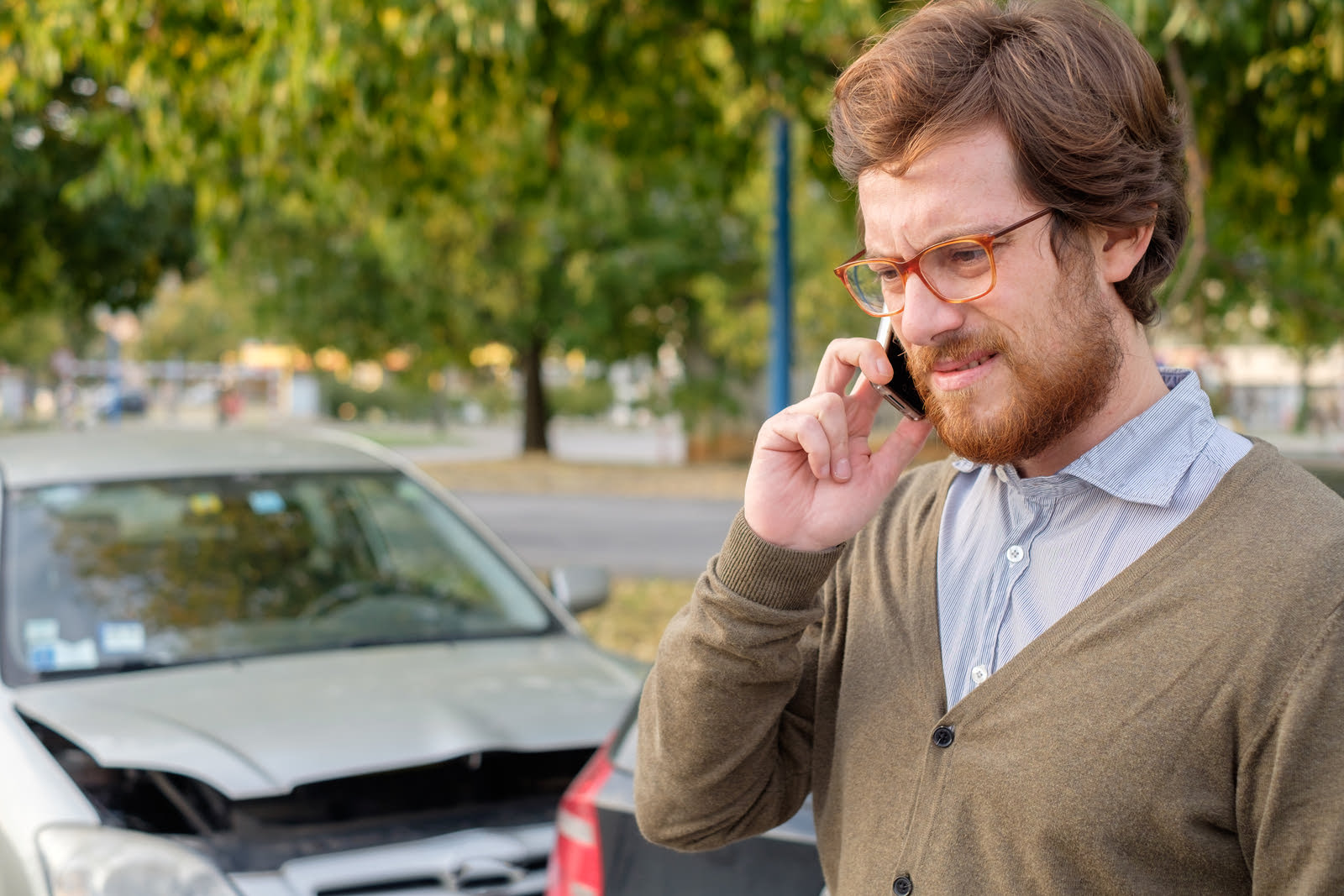
4. Contact Your Insurance Company Within 24 Hours
Most major insurance companies now have mobile apps and a car-accident checklist to process your claim. This checklist will include a list of information to compile at the scene of the accident. It’s an efficient way to get the paperwork done right the first time. Be sure to get a copy of the police report as soon as possible, too. This can be a critical part of an insurance claim, whether it’s property damage or personal injury.
The day after the car accident, follow up with your insurance agent to make sure your claim is underway. Also, you might have additional information to report — perhaps an injury like whiplash or a backache has become evident. That’s not uncommon. If you experience any symptoms, document them and seek medical attention.
You need collision coverage if you want the insurance company to repair your vehicle. (Check out CarGurus’ Beginner’s Guide to Car Insurance for more information.) If you were at fault and lack collision coverage, your insurer won’t cover repairs.
Ask the insurance company what your responsibilities are during the repair process. An insurance adjuster will inspect your vehicle to determine the extent of the damage and what the insurance company is willing to pay. Don’t feel you have to accept the adjuster’s initial repair quote. Shop around for a repair quote and negotiate with your insurance company on how much will be covered.
You don’t have to automatically take your vehicle to the repair shop the insurance company prefers, either. It’s your choice whether to use a dealership or an independent repair shop for your repairs. Also, know that the repair estimate, regardless of which shop you choose, may be subject to change. Vehicles are increasingly complex. What looks minor to your untrained eye might actually require a significant repair. Your auto policy may cover a rental car during repairs.
The appraiser may determine your vehicle is not worth fixing because the repair costs outweigh a certain percentage of the vehicle’s actual cash value. When this happens, your car is considered “totaled.”
You have a judgment call to make when filing a car insurance claim. You may not want to call your insurance provider if you think the damage is minor, like if you were bumped in a parking lot and can use touch-up paint to fix your car. Such a minor claim may not be worth a potential hike in insurance rates.
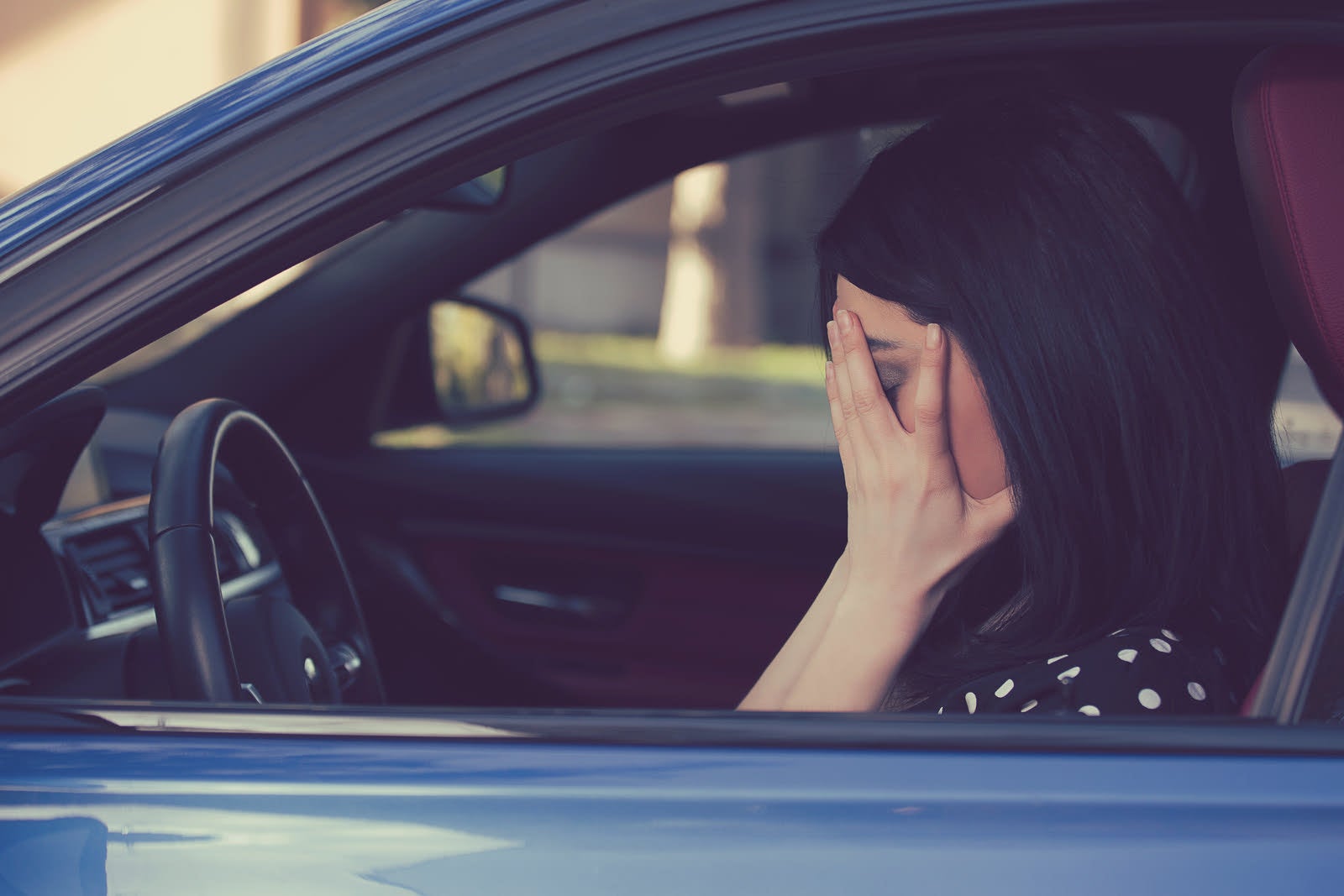
Understanding No-Fault vs. At-Fault States
Auto insurance laws vary depending on whether you live in a no-fault or at-fault (tort) state. In no-fault states like Florida, Michigan, New York, or Pennsylvania, you file a claim with your own insurance company regardless of who caused the accident. In at-fault states, which make up the majority of states, you file with the at-fault driver's insurance. Other states follow comparative negligence rules, meaning your recovery is reduced by your percentage of fault. For example, if your damages are $10,000 and you're 20% at fault, you would receive $8,000. A few states, like Alabama, Maryland, North Carolina, and Virginia, follow contributory negligence rules, which bar any recovery if you are even slightly at fault.
Timeline: What to Do and When
| Timeline/Action | What to Do |
|---|---|
| At the Scene – Immediate (first 60 seconds) | Check yourself for injuries, check your passengers for injuries, and if it's safe, check other vehicle occupants. Call 9-1-1 if anyone is injured. |
| At the Scene – Next one to five minutes | Move to a safe location if the accident is minor and the vehicles are drivable. Turn on hazard lights and call the non-emergency police number. |
| At the Scene – While waiting for the police | Exchange information with other driver(s), take pictures and videos of the accident scene, and record your version of what happened while it's fresh in your mind. |
| Within 24 Hours – Call your insurance | Report the accident within 24 hours, send photos via email or app, and ask about rental car coverage. |
| Within 24 Hours – Document everything | Email yourself all photos to ensure safekeeping, start documenting any medical symptoms, pain, or activities you can't do, and save all paperwork in one folder. |
| Within Three to Seven Days – Follow up on the police report | You can follow up on a police report at a police station or online, obtain an official accident report, review it for accuracy, and send a copy to your insurance. |
| Within Three to Seven Days – Start the repair process | Once the insurance adjuster inspects your vehicle, you don't have to settle for a lowball estimate. You can negotiate. You can also choose your own repair shop, if you prefer, as you're not required to use your insurance company's preferred shop. Understand the repair timeline and rental car coverage period if applicable. |
| Within Three to Seven Days – Continue medical care if applicable | Make sure you attend any follow-up medical appointments, that you're documenting all your symptoms in writing, and keeping receipts for all expenses, including medical, medication, and mileage to appointments. |
| Within Two to Four Weeks – Insurance claims processing | Stay in contact with your adjuster and provide any additional documentation requested. |
| Within Two to Four Weeks – Vehicle repairs | Inspect your repairs before accepting the vehicle back, and make sure to test drive before signing off. |
| Within Two to Four Weeks – Consider getting a lawyer if needed | Consult an attorney if there were serious injuries, a disputed fault, your insurance denied your claim, the other driver was uninsured, and there were significant damages, or the claim value was over $10,000. |
FAQs
Should I call the police after a minor car accident?
Yes, in most cases. Call police if there's any injury (no matter how minor), property damage over your state's threshold (typically $500-1,000), or if the other driver has no insurance. Police reports are crucial for insurance claims and preventing disputes. Even if police don't come to the scene, file a report at the station within 24 hours.
Do I call my insurance after an accident that wasn't my fault?
Yes. Always notify your insurance within 24 hours, even if you weren't at fault. Your policy requires prompt notification of any accident. You can still choose to file through the other driver's insurance, but your insurer needs to know. If you don't report it and the other driver makes a claim against you, you could face policy cancellation for failure to report.
How long do I have to report a car accident to insurance?
Most policies require reporting as soon as possible or within 24-72 hours. Check your policy for the exact time frame. Reporting late can result in claim denial or policy cancellation. Even if you're deciding whether to file a claim, report the accident immediately to protect yourself. You can always decide not to file a claim later, but you can't undo a late report.
What happens if the other driver doesn't have insurance?
File a police report immediately (driving without insurance is illegal in most states). Use your uninsured motorist coverage if you have it. If not, your collision coverage can cover vehicle damage (but you pay the deductible). You can sue the uninsured driver personally, but collecting is difficult if they have no assets.
Can I leave the scene of a minor accident?
No. Leaving before exchanging information and filing a police report (when required) is considered hit-and-run, even for minor accidents. Penalties include: criminal charges, license suspension, fines up to $5,000, possible jail time, and insurance denial. You must stay until you've fulfilled all legal requirements: exchange information, call the police if required, and render aid if needed.
Should I use the insurance company's preferred repair shop?
No, you're not required to. You have the right to choose your own repair shop, dealership, or independent shop. Get two ot three estimates, compare, and choose the shop you trust.
Real-World Scenarios
The other driver is yelling at me and claiming I'm at fault
Stay calm. Don't engage in the argument and stay in your car if you feel unsafe. Don't admit fault or get defensive. Call the police immediately and let them know the other driver is being aggressive.
Should I accept the other driver's offer to pay cash and skip insurance?
No. Accepting an offer on the spot can be risky. You might discover more damage to your vehicle than you first realized, the other party could report the accident to their insurance and claim you're at fault without proof of any prior settlement, or your injuries could appear later, leading to expensive medical bills. Always insist on going through your own insurance and don't accept an immediate settlement. Be sure to exchange contact and insurance information, then let your insurance handle the claim.
I hit a deer/animal. What do I do?
First, pull to a safe location and turn on your hazard lights. Never approach an injured animal; instead, call animal control or the police, who can handle the animal safety. Check your vehicle for damage and determine if it's safe to drive. In many states, police must be called for collisions with large animals. Take photos of your vehicle damage and, from a safe distance, the animal, noting the time, location, and road conditions. For insurance, comprehensive coverage typically covers animal strikes.
The Bottom Line
Auto accidents are both physically and mentally stressful. Take a few moments to compose yourself. Focus your energy on gathering information you'll need and dealing with the police officers who respond.
Follow your auto insurance’s claims process. If you have even a slight personal injury, ask an uninjured passenger to compile the necessary information for you. Remember that you have rights, too. Consider seeking legal advice or contacting a lawyer if you feel the insurance companies are not addressing your needs.
There’s no such thing as a good car accident. However, with just a little preparation, you can have a good car accident claim process that sees you fairly treated and gets your vehicle back on the road as soon as possible.

